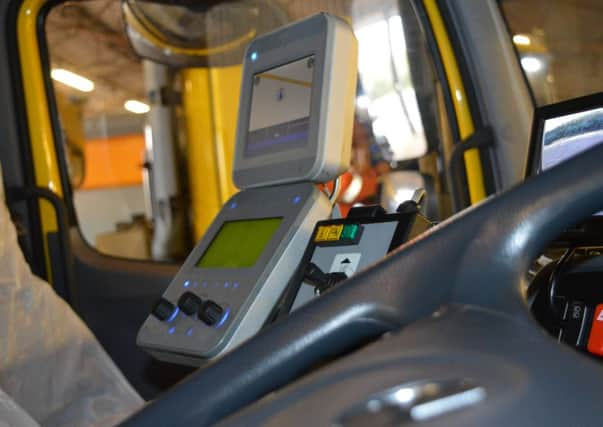FEATURE: Gritting teams armed with new technology


Lincolnshire County Council and Kier, who work in partnership to grit the highways, have a new system in place to monitor the temperature of individual roads.
The state-of-the-art technology from the Met Office makes use of weather stations across the county along with a range of factors to predict road temperatures.
Advertisement
Hide AdAdvertisement
Hide AdAs the council sent its fleet of 43 gritters out on a test run earlier this year, Coun Richard Davies, executive member for highways, said: “I am really excited about the gritting programme this year as we have a more efficient and cost-effective service and we can still treat nearly 2,000 miles of our county’s road at once if we need to.
“Our salt reserves are shipped over from the Mediterranean so it has made financial sense to buy in bulk and we will keep what we don’t use for the following winter
“We also expect to use less salt this winter as we can monitor the temperature of individual roads with our new-technology – so we can be more targeted with the roads we treat.
“Of course if we are in any doubt roads will be gritted to make sure they are safe but it’s great to have this flexibility.”
Advertisement
Hide AdAdvertisement
Hide AdFor the new weather monitoring system to work, Lincolnshire County Council gives the Met Office its salting routes.
The weather authority then looks at where the roads fall geographically on their UK forecast model, which is divided into 1km squares with a weather prediction for each.
The Met Office also looks at satellite data to see the ‘skyview’ - looking at how much the road is exposed or shaded by trees and buildings - and also consider things like water sources and road material.
This is fed into their computers along with the data from the nearest weather station and allows them to come up with a forecast for each section of the route.
Advertisement
Hide AdAdvertisement
Hide AdThis is followed up by driving a special vehicle around the routes to verify what the differences are and make sure it is accurate.
A spokesman for the council said: “In its simplest form, it takes the known data from a single point (the weather station) and tempers it up or down (by sometimes up to two or three degrees along a route) based on a variety of data. Previously, we just got a minimum road temperature for a whole domain in our forecast, now we get forecasts for each segment of each route so some routes might drop below freezing where others won’t.”